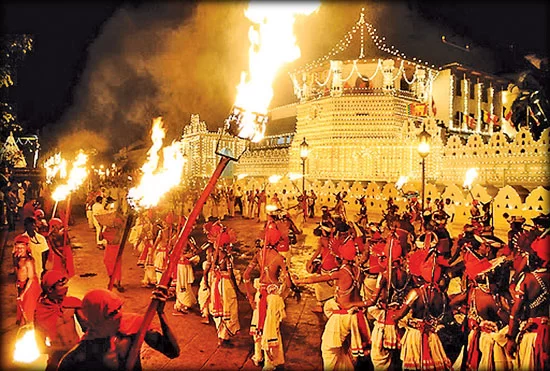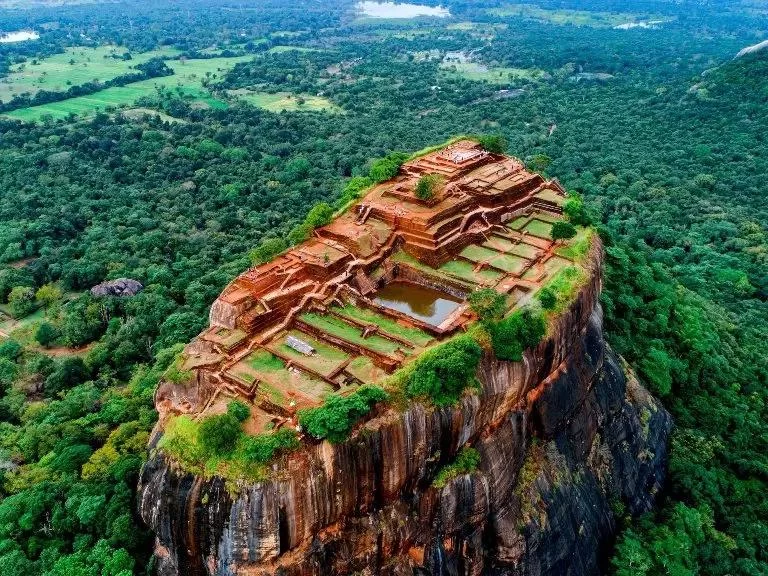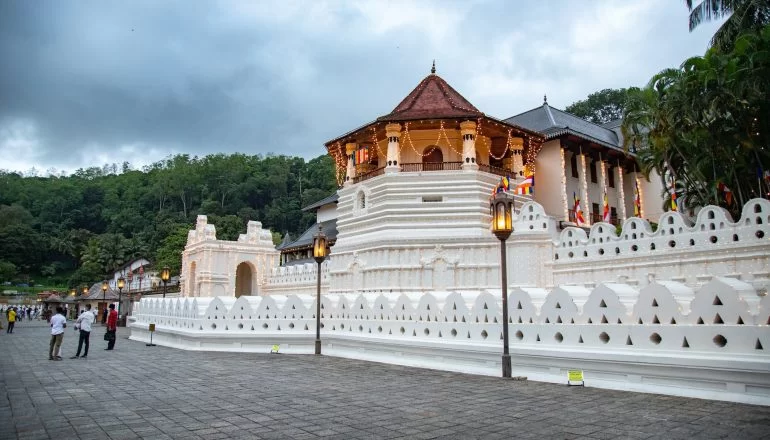Discover the Roots of Tamil Buddhism in Sri Lanka: A Spiritual Journey
- Why Explore Tamil Buddhism in Sri Lanka?
- Key Tamil Buddhist Sites in Sri Lanka
- Exploring Tamil Buddhist Culture and History
- Spiritual Activities in Tamil Buddhism
- How to Plan Your Tamil Buddhist Pilgrimage in Sri Lanka
- Book Your Tamil Buddhist Journey Today
1. Why Explore Tamil Buddhism in Sri Lanka?
Sri Lanka, renowned for its rich Buddhist heritage, also offers a unique perspective on Tamil Buddhism. The Tamil community in Sri Lanka has a long history of Buddhist practice, with distinct traditions that reflect both the island’s indigenous culture and Tamil Buddhist influences brought by centuries of cultural exchange.
Exploring Tamil Buddhism in Sri Lanka is not just about visiting temples; it’s about uncovering a rich spiritual heritage that has shaped the region’s history and continues to influence modern-day practices. For those seeking a deeper understanding of Buddhism through the lens of Tamil culture, Sri Lanka provides a transformative and spiritually enriching experience.
2. Key Tamil Buddhist Sites in Sri Lanka
From the northernmost regions to the central hills, Tamil Buddhism in Sri Lanka is reflected in a series of sacred sites that offer a profound insight into the faith’s evolution. These sites are not only of religious significance but also serve as cultural and historical touchstones for Tamil Buddhists and travelers alike.
- Jaffna: Jaffna, the cultural hub of the Tamil community in Sri Lanka, is home to several important Buddhist sites. The Vaitheeswaran Kovil is one such temple that has a Tamil Buddhist connection, despite being primarily a Hindu shrine. Visitors can explore its rich Tamil heritage and reflect on the Buddhist influence in the region.
- Mahavihara Temple: In the heart of the Tamil regions lies the Mahavihara Temple in the town of Tellippalai, where a thriving Buddhist community lives. The temple is a center for Tamil Buddhist monks and scholars, providing a serene space for reflection and learning about the ancient Tamil Buddhist traditions.
- Kandy: While Kandy is more traditionally associated with Sinhalese Buddhism, the Tamil influence is still strong in this cultural capital. The Temple of the Tooth in Kandy houses Sri Lanka’s most sacred Buddhist relic. Here, Tamil pilgrims often visit to pay respects, and the annual Perahera festival sees a fusion of Tamil and Sinhalese Buddhist rituals.
- Mannar: Mannar, known for its strategic location in the northern part of Sri Lanka, is another key destination where Tamil Buddhism flourished. The Thiruketheeswaram Temple in Mannar is a prime example of Tamil Buddhist architecture and spirituality.
3. Exploring Tamil Buddhist Culture and History
The history of Tamil Buddhism in Sri Lanka dates back to the arrival of Buddhism in the island in the 3rd century BCE. However, Tamil Buddhism evolved over time, adapting elements from both the local Sinhala Buddhist traditions and South Indian Tamil practices. The Tamil community in Sri Lanka has played a pivotal role in preserving and transmitting Buddhist teachings through their unique rituals, sacred texts, and artistic expressions.
By visiting these Tamil Buddhist sites, you gain a deeper appreciation for the blending of Tamil culture with Buddhist philosophy. For instance, the Jaffna Cultural Centre offers exhibits on the Tamil Buddhist legacy, showcasing the region's contributions to art, literature, and spiritual practices. This fusion has created a distinct Tamil Buddhist identity that travelers can witness in the region’s temples, shrines, and sacred spaces.
4. Spiritual Activities in Tamil Buddhism
Engaging in spiritual activities is central to the Tamil Buddhist pilgrimage experience. As you journey through Sri Lanka’s Tamil Buddhist sites, you’ll encounter a range of spiritual practices, from meditation and chanting to offering prayers and participating in temple festivals.
- Chanting and Meditation: Many Tamil Buddhist temples offer daily chanting sessions where visitors can join local devotees in prayers. Participating in these rituals allows travelers to experience Tamil Buddhism firsthand and deepen their own meditation practices.
- Offering Flowers and Incense: One of the most sacred practices in Tamil Buddhist temples is offering flowers and incense to the Buddha, a symbolic gesture of devotion and respect. Pilgrims can take part in this ancient tradition at sites like the Mahavihara Temple or the Vaitheeswaran Kovil.
- Temple Festivals: If you visit during a Tamil Buddhist festival, you’ll experience the vibrancy of Tamil Buddhist culture in action. The Perahera festival, held in Kandy and other parts of Sri Lanka, features a mix of Buddhist rituals, music, and dance, with deep roots in Tamil religious practices.
5. How to Plan Your Tamil Buddhist Pilgrimage in Sri Lanka
Planning a Tamil Buddhist pilgrimage in Sri Lanka requires some preparation to make the most of your spiritual journey. Here are a few tips to help guide your travels:
- Choose the Right Time: The best time to visit Tamil Buddhist sites is during key Buddhist festivals, such as the Vesak festival, which celebrates the birth, enlightenment, and death of the Buddha. These times offer a deeper spiritual experience with vibrant local celebrations.
- Travel with Local Experts: To get a more personalized experience and deeper insights into Tamil Buddhism, consider traveling with a local guide from Tamil Travel Lanka, who can offer expert knowledge about the history, culture, and spiritual significance of each site.
- Respect Local Customs: Be mindful of the sacredness of the places you visit. Always dress modestly, remove your shoes when entering temples, and observe the local customs of prayer and meditation.
6. Book Your Tamil Buddhist Journey Today
Ready to discover the roots of Tamil Buddhism in Sri Lanka? Start your transformative spiritual journey today with Tamil Travel Lanka. Our tailored pilgrimage experiences will guide you through the sacred Tamil Buddhist sites of Sri Lanka, providing a unique opportunity to immerse yourself in the rich culture and history of Tamil Buddhism.
Click here to book your Tamil Buddhist pilgrimage and embark on a spiritual journey like no other.






